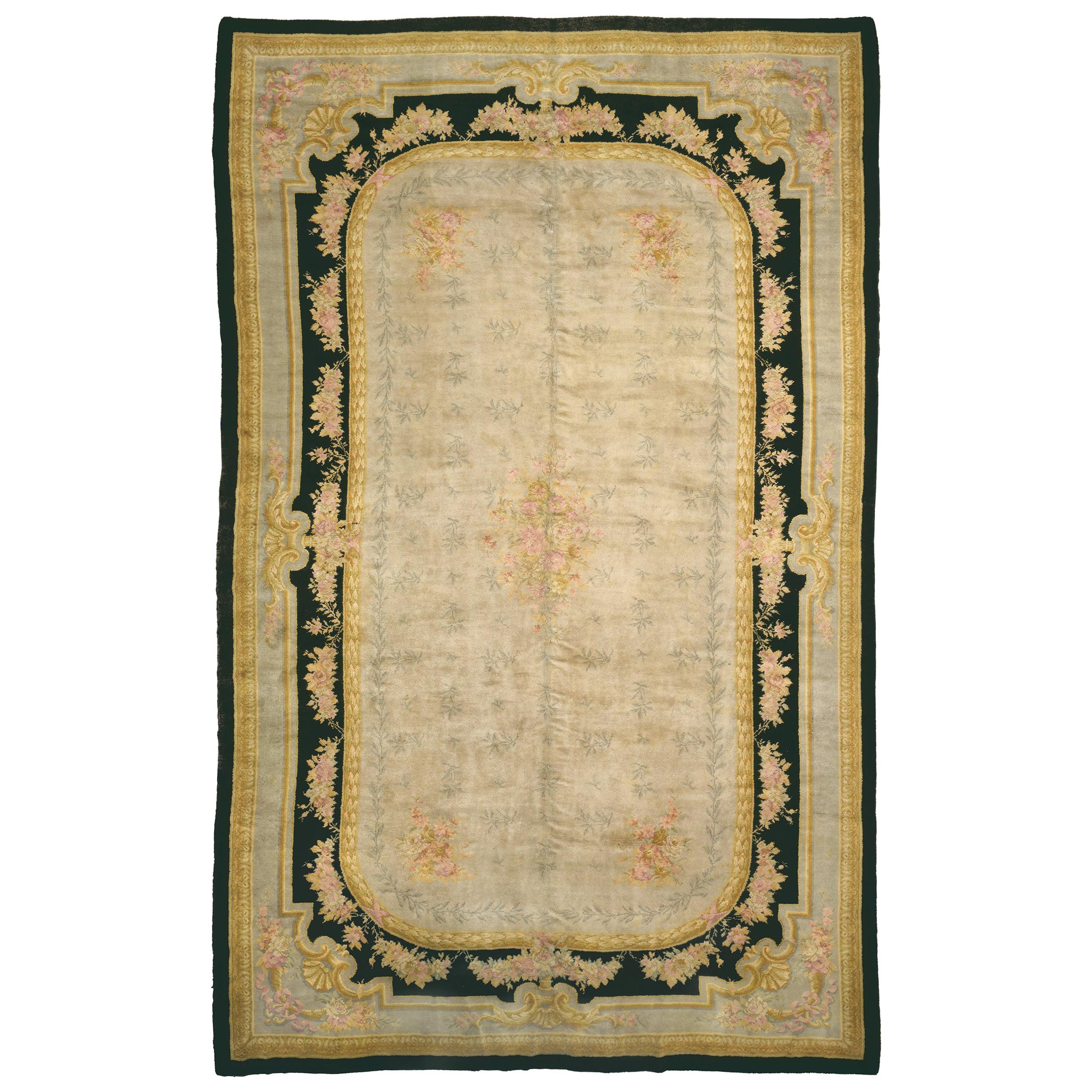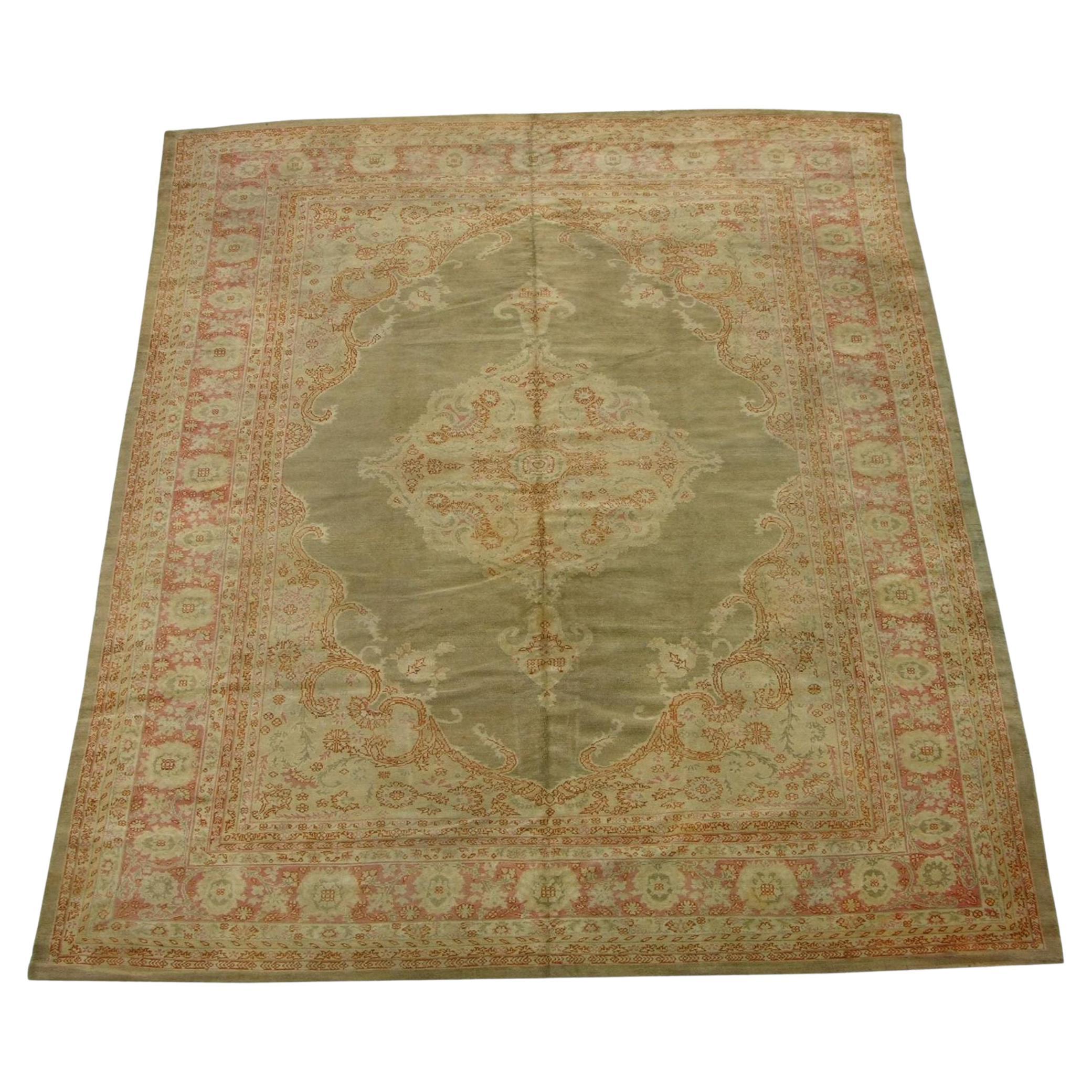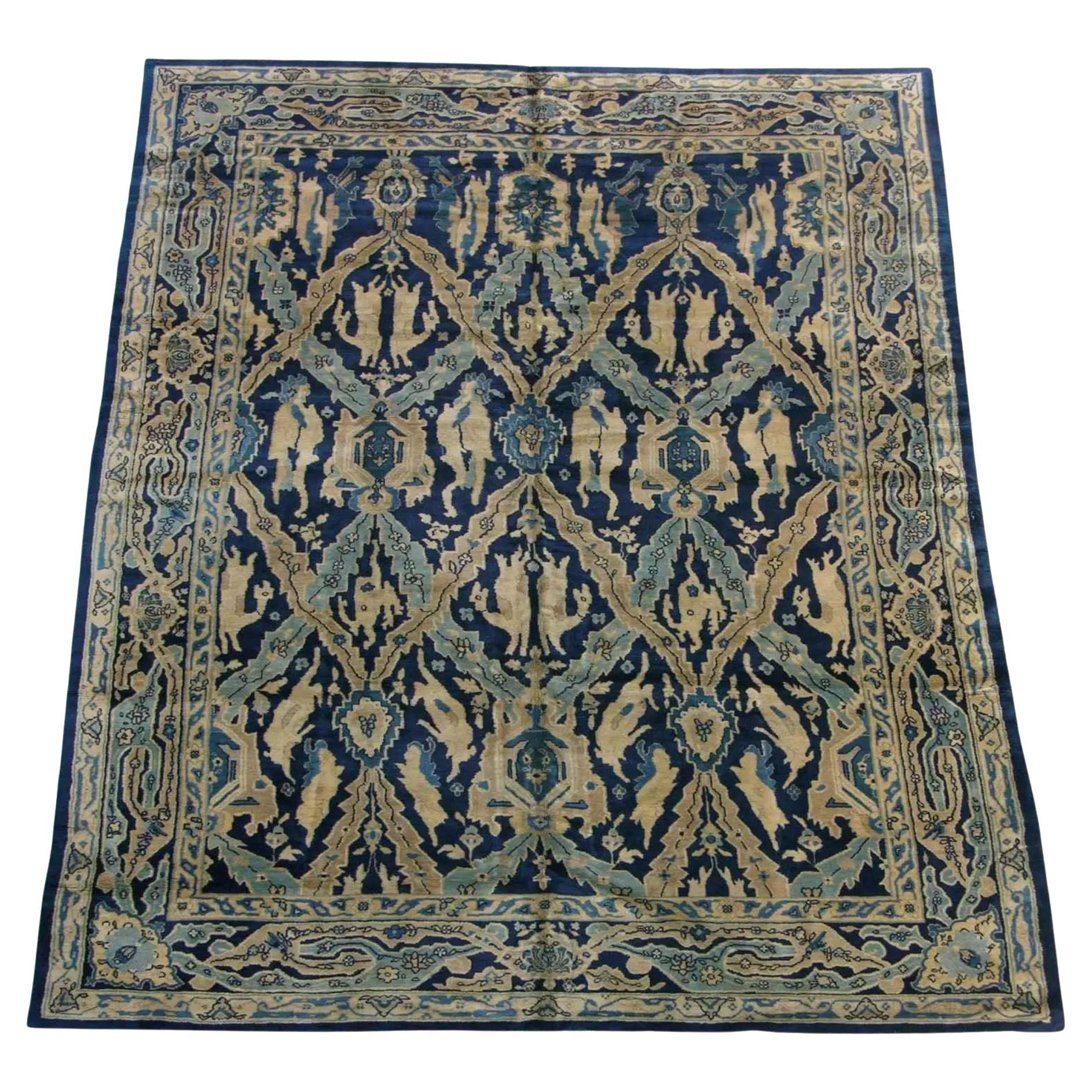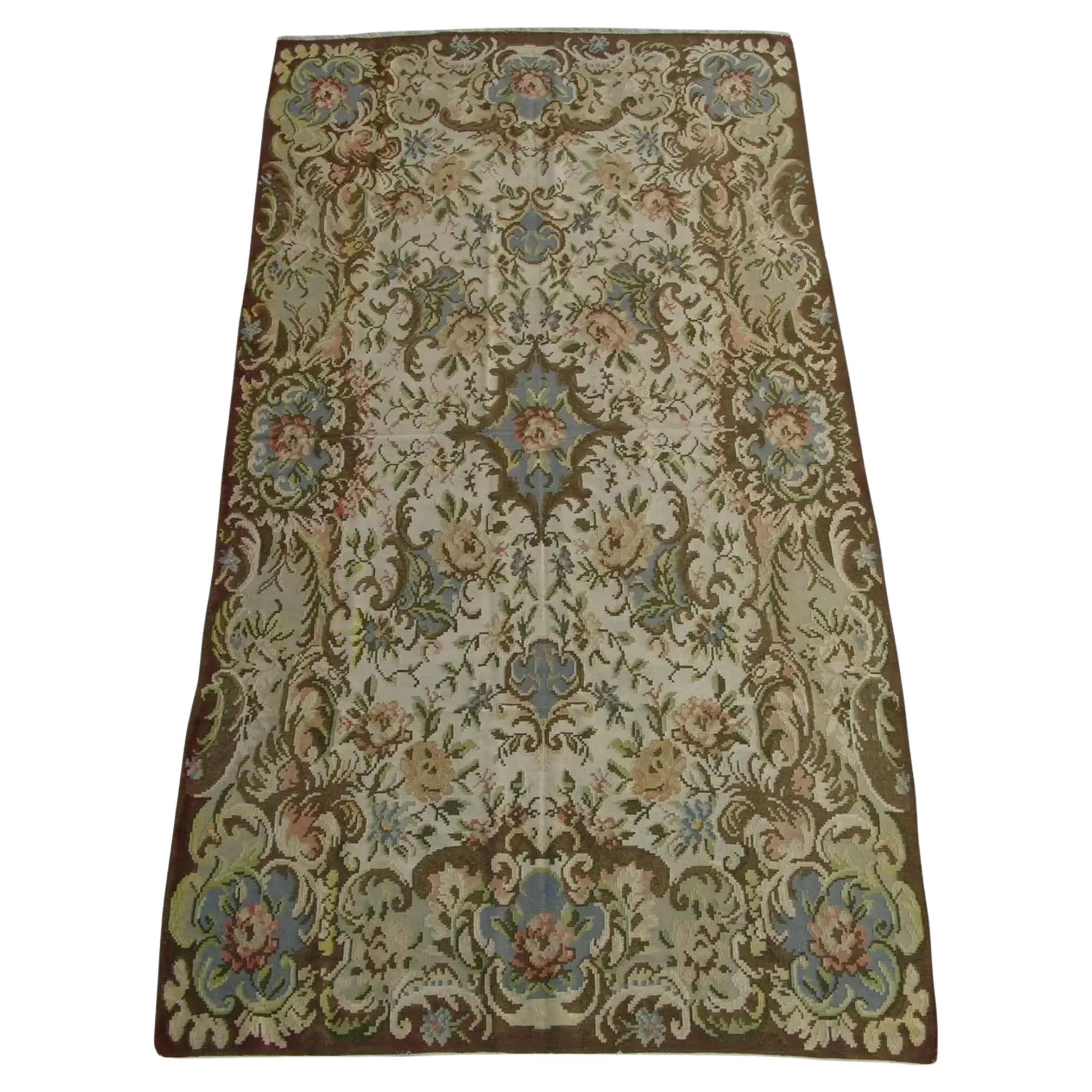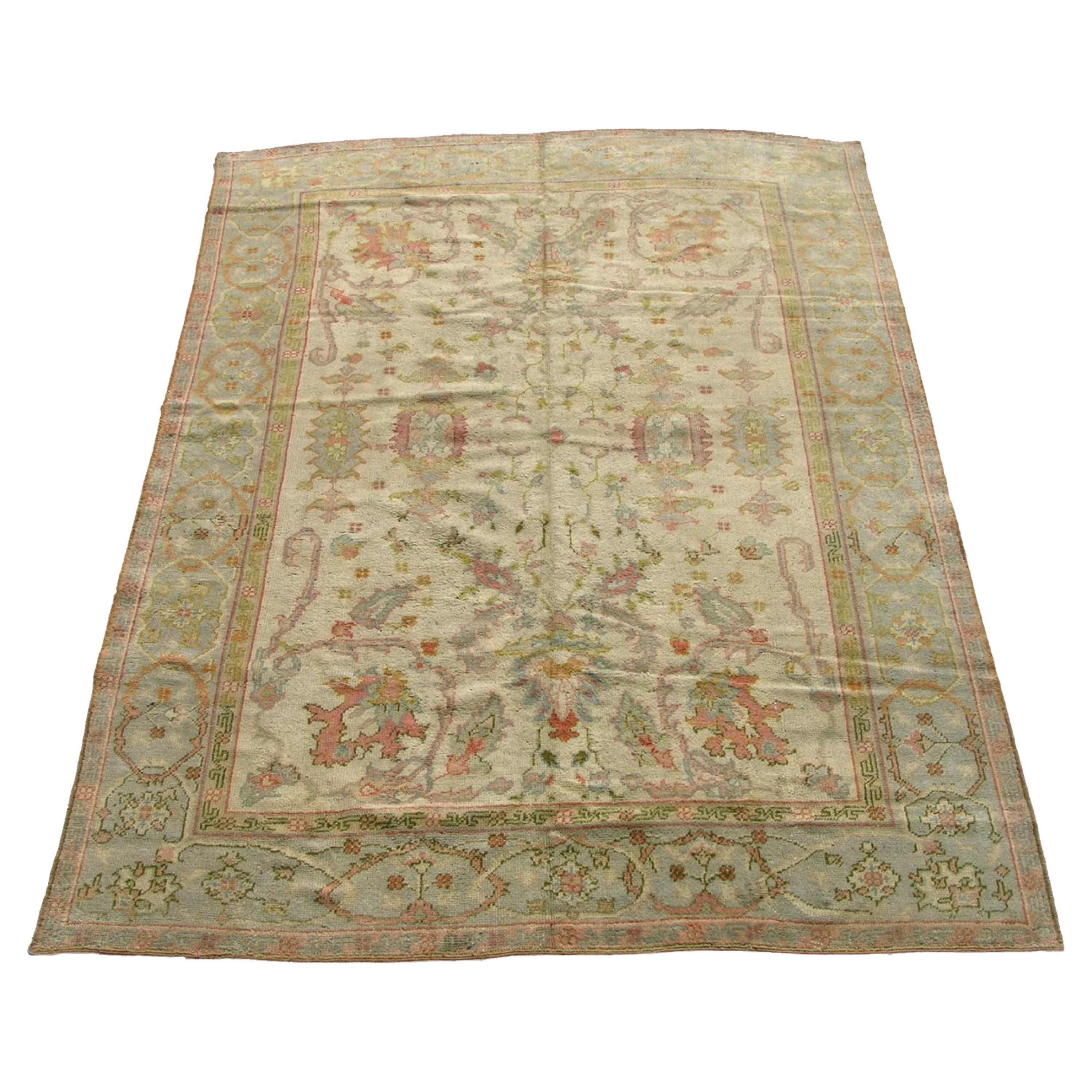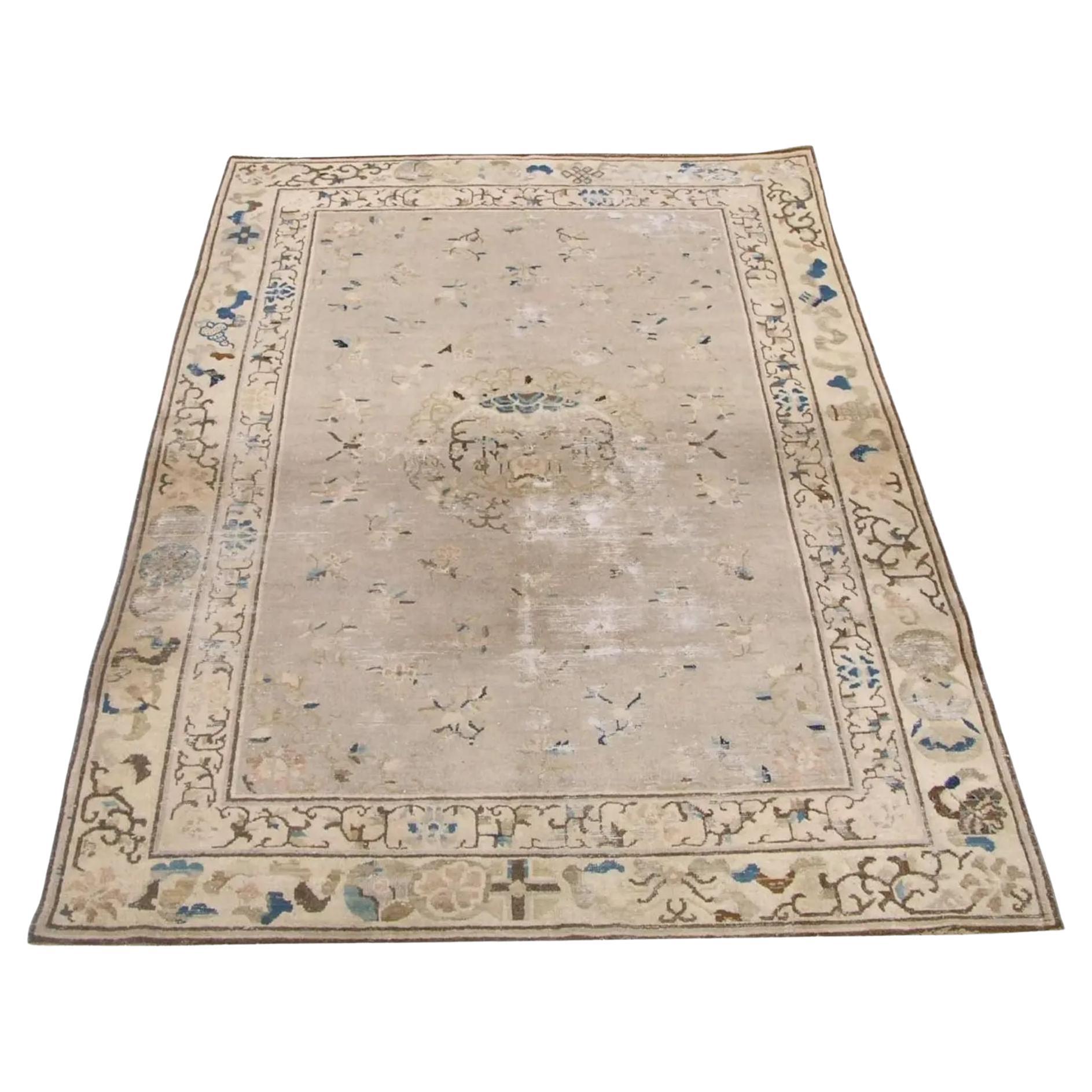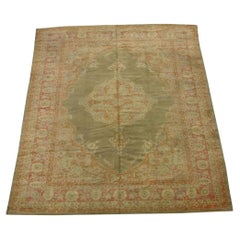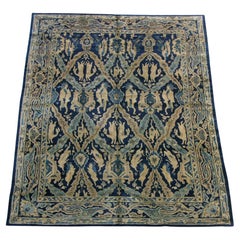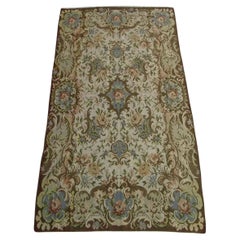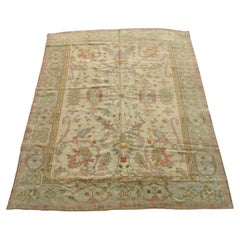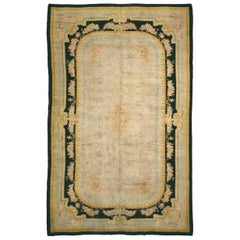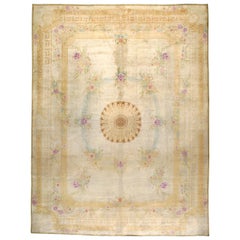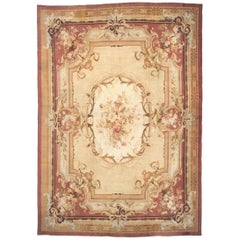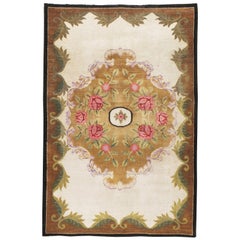Want more images or videos?
Request additional images or videos from the seller
1 of 7
1900s Antique European Rug 13′ × 16′3″
$19,500
£14,944.39
€17,175.95
CA$27,388.71
A$30,653.02
CHF 16,045.76
MX$372,378.59
NOK 203,740.37
SEK 192,263.84
DKK 128,162.81
About the Item
Savonnerie Carpets – During the early seventeenth century, a weaver named Pierre DuPont traveled to the Levant. Upon his return, he claimed to have discovered the technique of creating Turkish rugs. Oriental rugs were extremely expensive during Bourbon times, and a French manufactory that could create the same type of rug would lower the price significantly. Henri VI of France–the reigning monarch at the time–took advantage of DuPont’s skills and established a workshop for him at the Louvre. In 1627, King Louis XIII founded a manufactory for DuPont and his apprentice, Simon Lourdet, on the site of a defunct soap factory in the sixteenth arrondissement (also known as Quai de Chaillot). The name “Savonnerie” was born from the French word “savon” meaning “soap.” DuPont and Lourdet worked together, weaving rugs under a royal patent for the king and other nobles, until they had a falling out and split up. Lourdet remained at the Chaillot location while DuPont went to his workshops in the Louvre, though both continued to make Savonnerie rugs.
DuPont’s discovery was an ancient weaving technique called the Ghiordes knot. The Ghiordes is the oldest known knot used in carpet production. It consists of a symmetrical structure achieved by passing a single weft yarn over two warp yarns, pulling through between before severing the yarn to create the pile. The Ghiordes knot is characteristic of Turkish rugs. This weaving technique created a more durable structure than the tapestries created by European weavers. Tapestries were hung on walls, while the Turkish style French rugs were sturdy enough for foot traffic.
When Louis XVI came to the French throne in 1643, he was a mere five years old, but in 1659 he began a phase of renovations for the Palais de Louvre, at which he commissioned 274 carpets — all of a length of twenty-nine feet with varying widths–from the Savonnerie manufactory. The process was grueling and did not end until 1697 when the final carpet for the Louvre was woven. His favorite artist, Charles Le Brun, drew up cartoons of rug designs for the Louvre’s Grande Galerie. The designs consisted of a dark-colored background, filled with motifs of scrolls, cornucopias, flowers, arms of France, and the monogram of Louis. Inventories of Louis’ possessions show that in the early years of his reign, he had a number of Turkish and Persian rugs, though they were gradually superseded by Savonnerie carpets. At the same time, King Louis was hard at work supervising the construction of his grand new palace at Versailles, and he moved his residence at the Louvre for Versailles in 1678.
Savonnerie carpets also served as grand diplomatic gifts from Louis to foreign ambassadors and other notables. He gifted a collection of music-themed Savonnerie creations to the ambassador of Siam, where they stayed intact and in use for hundreds of years.
The legacy of the Savonnerie manufactory was a great one. The carpets remained the exclusive property of the French rulers until 1768. In the same century, the classic Savonnerie designs were updated with lighter, brighter colors and Rococo elements. The production of Savonnerie rugs declined in the latter half of the eighteenth century, until 1805 when the designs were revived by Napoleon. Twenty years later, the Savonnerie workshop merged with the Gobelins tapestry manufactory. This marked the end of its independence, though the production was ever steady. A number of the first Savonnerie designs still exist today, having survived the Fronde, the French Revolution, and two World Wars. They have avoided going out of fashion by reinventing themselves from Louis XIV style to Rococo to French Empire to Art Deco and beyond.
Antique French Savonnerie rugs exemplify the formal grace and elegance of classical European design. Like Aubusson tapestry rugs, Savonneries originated in France when European taste turned away for a time from Oriental carpets in the later eighteenth and earlier nineteenth centuries. Named for nearby factories that produced soap or “savon,” Savonnerie rugs shared with Aubussons a Neo-Classical taste for naturalistic flowers and swags or garlands in soft colors on a dominant ivory field, except that they were made in knotted pile rather than tapestry technique. Later, carpets of this kind were made in other European centers, most notably in Spain
About the Seller
5.0
Platinum Seller
Premium sellers with a 4.7+ rating and 24-hour response times
Established in 1920
1stDibs seller since 2023
63 sales on 1stDibs
Typical response time: <1 hour
- ShippingRetrieving quote...Shipping from: Los Angeles, US
- Return Policy
Authenticity Guarantee
In the unlikely event there’s an issue with an item’s authenticity, contact us within 1 year for a full refund. DetailsMoney-Back Guarantee
If your item is not as described, is damaged in transit, or does not arrive, contact us within 7 days for a full refund. Details24-Hour Cancellation
You have a 24-hour grace period in which to reconsider your purchase, with no questions asked.Vetted Professional Sellers
Our world-class sellers must adhere to strict standards for service and quality, maintaining the integrity of our listings.Price-Match Guarantee
If you find that a seller listed the same item for a lower price elsewhere, we’ll match it.Trusted Global Delivery
Our best-in-class carrier network provides specialized shipping options worldwide, including custom delivery.More From This Seller
View All1920s Antique Indian Rug - 14'10'' X 11'7''
Located in Los Angeles, US
Antique Indian Rugs – Not all the rugs that were woven in India are easy to categorize. That is why we created this antique Indian rugs section. Here you will find Indian rugs of whi...
Category
Vintage 1920s Asian Empire Russian and Scandinavian Rugs
Materials
Wool, Cotton
1900s Antique Chinese Rug - 11'8'' X 9'2''
Located in Los Angeles, US
Antique Chinese Rugs, as opposed to most of the antique rug productions, were woven almost exclusively for internal consumption. Since they were mostly sheltered from European and We...
Category
Vintage 1910s Chinese Chinese Export Chinese and East Asian Rugs
Materials
Wool
1900s Antique Bessarabian Rug - 12'0'' X 6'7''
Located in Los Angeles, US
Antique Bessarabian Stylish Design 12'0'' X 6'7''
one of a kind 1 of 1
ask for more details
Category
Antique Early 1900s Unknown Bessarabian Western European Rugs
Materials
Wool, Cotton
Antique Oushak Rug 11.3x8.2
Located in Los Angeles, US
Antique Turkish Oushak rugs have been woven in Western Turkey since the beginning of the Ottoman period. Historians attributed to them many of the great masterpieces of early Turkish...
Category
Antique Early 1900s Other Russian and Scandinavian Rugs
Materials
Wool, Cotton
1910s Antique Worn Chinese Rug - 8'6'' X 5'9''
Located in Los Angeles, US
Antique Chinese Rugs, as opposed to most of the antique rug productions, were woven almost exclusively for internal consumption. Since they were mostly sheltered from European and We...
Category
Vintage 1910s Unknown Chinese Export Chinese and East Asian Rugs
Materials
Wool, Cotton
1900 Fine Antique Chinese Rug
Located in Los Angeles, US
Antique Chinese Rugs, as opposed to most of the antique rug productions, were woven almost exclusively for internal consumption. Since they were mostly sheltered from European and We...
Category
Antique Early 1900s Other Russian and Scandinavian Rugs
Materials
Wool, Cotton
You May Also Like
Early 20th Century Savonnerie Style Rug
Located in New York, NY
Northern Ireland, circa 1900
Handwoven
Measures: 19'5" x 12'0" (592 x 366 cm).
Category
Early 20th Century Northern Irish Western European Rugs
Materials
Wool
Vintage Persian Rug with European Design
Located in New York, NY
A custom ordered vintage Persian Tabriz carpet influenced by European design.
Category
Mid-20th Century Persian Aubusson Persian Rugs
Materials
Cotton, Wool
Late 19th Century French Savonnerie Rug
Located in New York, NY
Late 19th century French Savonnerie rug,
France, circa 1890
Measures: 19'0" x 13'1" (579 x 399 cm)
Handwoven.
Category
Antique Late 19th Century French Western European Rugs
Materials
Wool
Vintage European Continental Carpet
Located in New York, NY
A vintage European continental carpet from the mid-20th century. A large golden brown medallion of roses populates the ivory field. A brown border...
Category
Mid-20th Century European Arts and Crafts Western European Rugs
Materials
Wool
$3,900 Sale Price
20% Off
Late French Empire Carpet of Aubusson Weave
Located in Vancouver, British Columbia
An early 19thC French Aubusson weave carpet in the pure Empire style. The outside dark orange/brown border has likely been altered (reduced), and possibly dyed in places but is in ke...
Category
Antique Early 19th Century French Aubusson Western European Rugs
Materials
Wool
$5,200 Sale Price
20% Off
Vintage European Savonnerie Rug 10’ x 12'
Located in New York, NY
Vintage Savonnerie weave rug, hand knotted, circa 1950s
Design: Center Medallion
History of Savonnerie rugs:
The Savonnerie got its start when Henri IV (King of France from ...
Category
Vintage 1950s French Other Western European Rugs
Materials
Wool
$3,160 Sale Price
60% Off
More Ways To Browse
Antique Patent
King Rug
Gobelin Tapestry
Gobelins Tapestries
Gobelin Antique
Le Brun
Gobelins French Tapestry
French Tapestry Gobelins
French Cartoon
Louis Xvi Aubusson Furniture
Antique Spanish Tapestry
Tapestry Cartoon
Dupont Made In France
Spanish Throne
Dupont Lighter
Bourbon Bar
Tapestry Cartoons Aubusson
Antique Gobelins Tapestry
